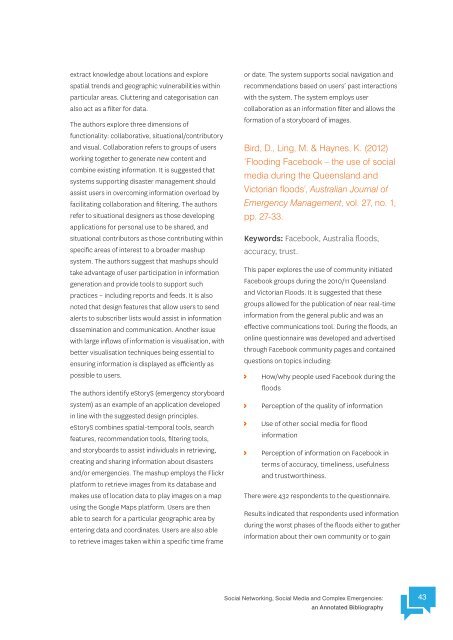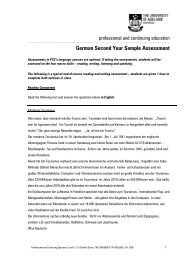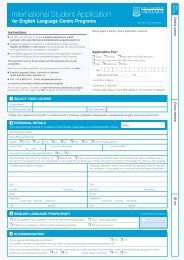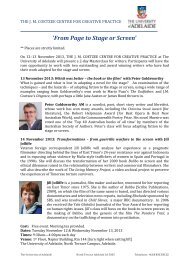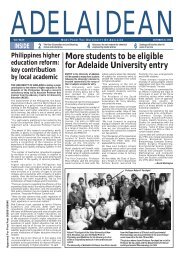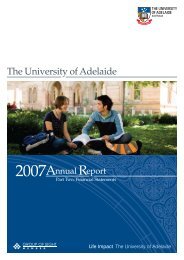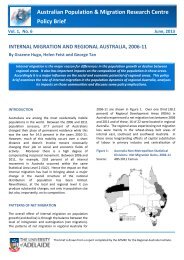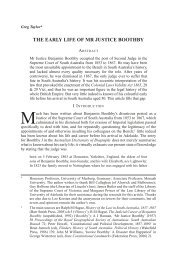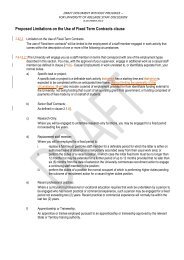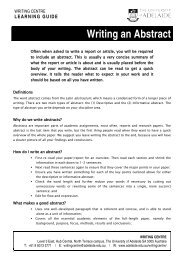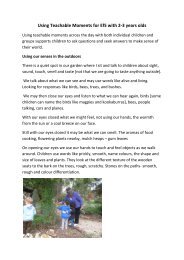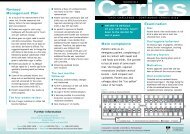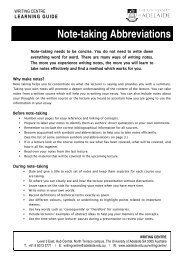Social Networking, Social Media and Complex Emergencies: an ...
Social Networking, Social Media and Complex Emergencies: an ...
Social Networking, Social Media and Complex Emergencies: an ...
You also want an ePaper? Increase the reach of your titles
YUMPU automatically turns print PDFs into web optimized ePapers that Google loves.
extract knowledge about locations <strong><strong>an</strong>d</strong> explore<br />
spatial trends <strong><strong>an</strong>d</strong> geographic vulnerabilities within<br />
particular areas. Cluttering <strong><strong>an</strong>d</strong> categorisation c<strong>an</strong><br />
also act as a filter for data.<br />
The authors explore three dimensions of<br />
functionality: collaborative, situational/contributory<br />
<strong><strong>an</strong>d</strong> visual. Collaboration refers to groups of users<br />
working together to generate new content <strong><strong>an</strong>d</strong><br />
combine existing information. It is suggested that<br />
systems supporting disaster m<strong>an</strong>agement should<br />
assist users in overcoming information overload by<br />
facilitating collaboration <strong><strong>an</strong>d</strong> filtering. The authors<br />
refer to situational designers as those developing<br />
applications for personal use to be shared, <strong><strong>an</strong>d</strong><br />
situational contributors as those contributing within<br />
specific areas of interest to a broader mashup<br />
system. The authors suggest that mashups should<br />
take adv<strong>an</strong>tage of user participation in information<br />
generation <strong><strong>an</strong>d</strong> provide tools to support such<br />
practices – including reports <strong><strong>an</strong>d</strong> feeds. It is also<br />
noted that design features that allow users to send<br />
alerts to subscriber lists would assist in information<br />
dissemination <strong><strong>an</strong>d</strong> communication. Another issue<br />
with large inflows of information is visualisation, with<br />
better visualisation techniques being essential to<br />
ensuring information is displayed as efficiently as<br />
possible to users.<br />
The authors identify eStoryS (emergency storyboard<br />
system) as <strong>an</strong> example of <strong>an</strong> application developed<br />
in line with the suggested design principles.<br />
eStoryS combines spatial-temporal tools, search<br />
features, recommendation tools, filtering tools,<br />
<strong><strong>an</strong>d</strong> storyboards to assist individuals in retrieving,<br />
creating <strong><strong>an</strong>d</strong> sharing information about disasters<br />
<strong><strong>an</strong>d</strong>/or emergencies. The mashup employs the Flickr<br />
platform to retrieve images from its database <strong><strong>an</strong>d</strong><br />
makes use of location data to play images on a map<br />
using the Google Maps platform. Users are then<br />
able to search for a particular geographic area by<br />
entering data <strong><strong>an</strong>d</strong> coordinates. Users are also able<br />
to retrieve images taken within a specific time frame<br />
or date. The system supports social navigation <strong><strong>an</strong>d</strong><br />
recommendations based on users’ past interactions<br />
with the system. The system employs user<br />
collaboration as <strong>an</strong> information filter <strong><strong>an</strong>d</strong> allows the<br />
formation of a storyboard of images.<br />
Bird, D., Ling, M. & Haynes, K. (2012)<br />
‘Flooding Facebook – the use of social<br />
media during the Queensl<strong><strong>an</strong>d</strong> <strong><strong>an</strong>d</strong><br />
Victori<strong>an</strong> floods’, Australi<strong>an</strong> Journal of<br />
Emergency M<strong>an</strong>agement, vol. 27, no. 1,<br />
pp. 27-33.<br />
Keywords: Facebook, Australia floods,<br />
accuracy, trust.<br />
This paper explores the use of community initiated<br />
Facebook groups during the 2010/11 Queensl<strong><strong>an</strong>d</strong><br />
<strong><strong>an</strong>d</strong> Victori<strong>an</strong> Floods. It is suggested that these<br />
groups allowed for the publication of near real-time<br />
information from the general public <strong><strong>an</strong>d</strong> was <strong>an</strong><br />
effective communications tool. During the floods, <strong>an</strong><br />
online questionnaire was developed <strong><strong>an</strong>d</strong> advertised<br />
through Facebook community pages <strong><strong>an</strong>d</strong> contained<br />
questions on topics including:<br />
ƸƸ<br />
ƸƸ<br />
ƸƸ<br />
ƸƸ<br />
How/why people used Facebook during the<br />
floods<br />
Perception of the quality of information<br />
Use of other social media for flood<br />
information<br />
Perception of information on Facebook in<br />
terms of accuracy, timeliness, usefulness<br />
<strong><strong>an</strong>d</strong> trustworthiness.<br />
There were 432 respondents to the questionnaire.<br />
Results indicated that respondents used information<br />
during the worst phases of the floods either to gather<br />
information about their own community or to gain<br />
<strong>Social</strong> <strong>Networking</strong>, <strong>Social</strong> <strong>Media</strong> <strong><strong>an</strong>d</strong> <strong>Complex</strong> <strong>Emergencies</strong>:<br />
<strong>an</strong> Annotated Bibliography<br />
43


